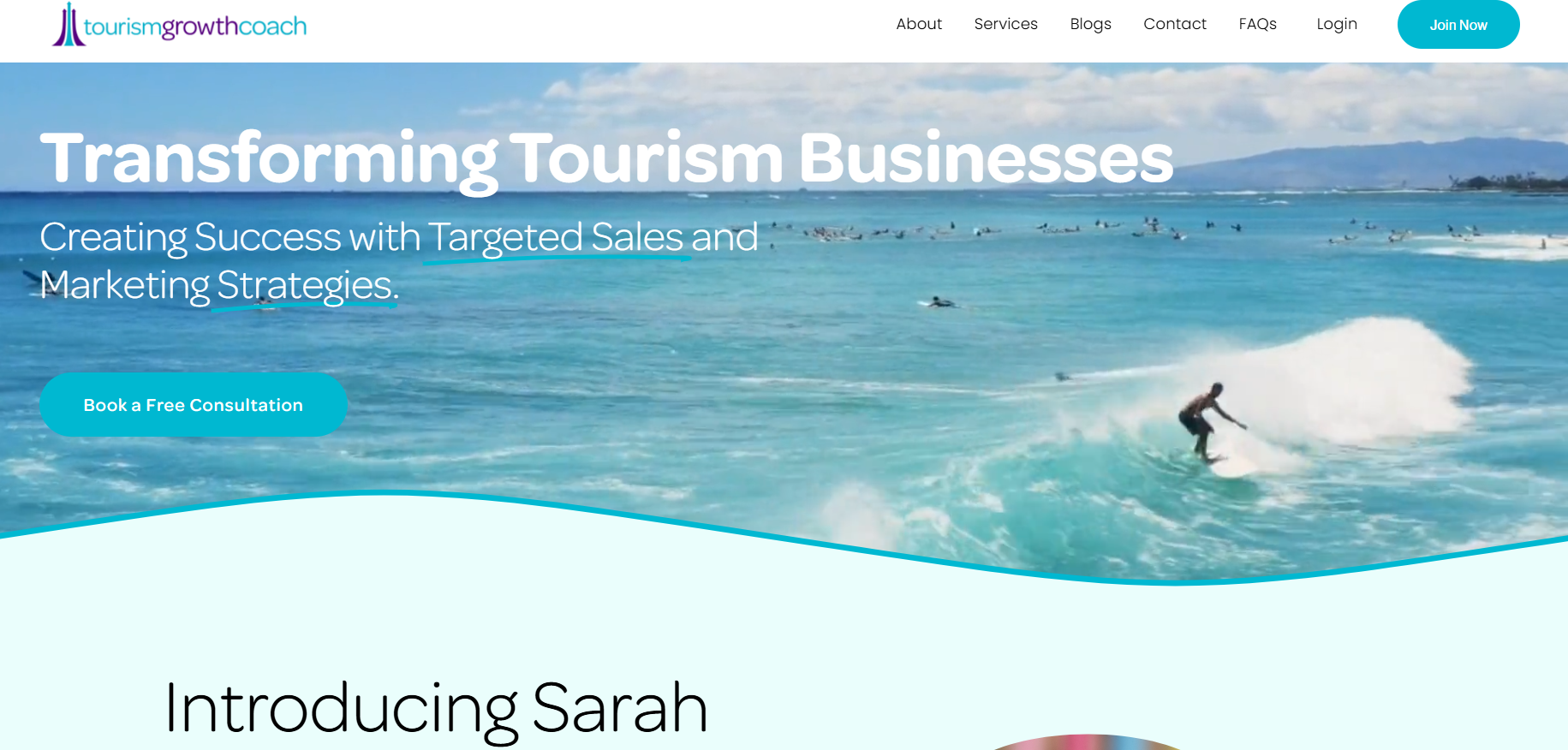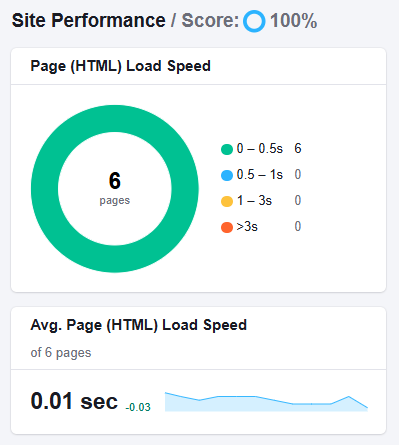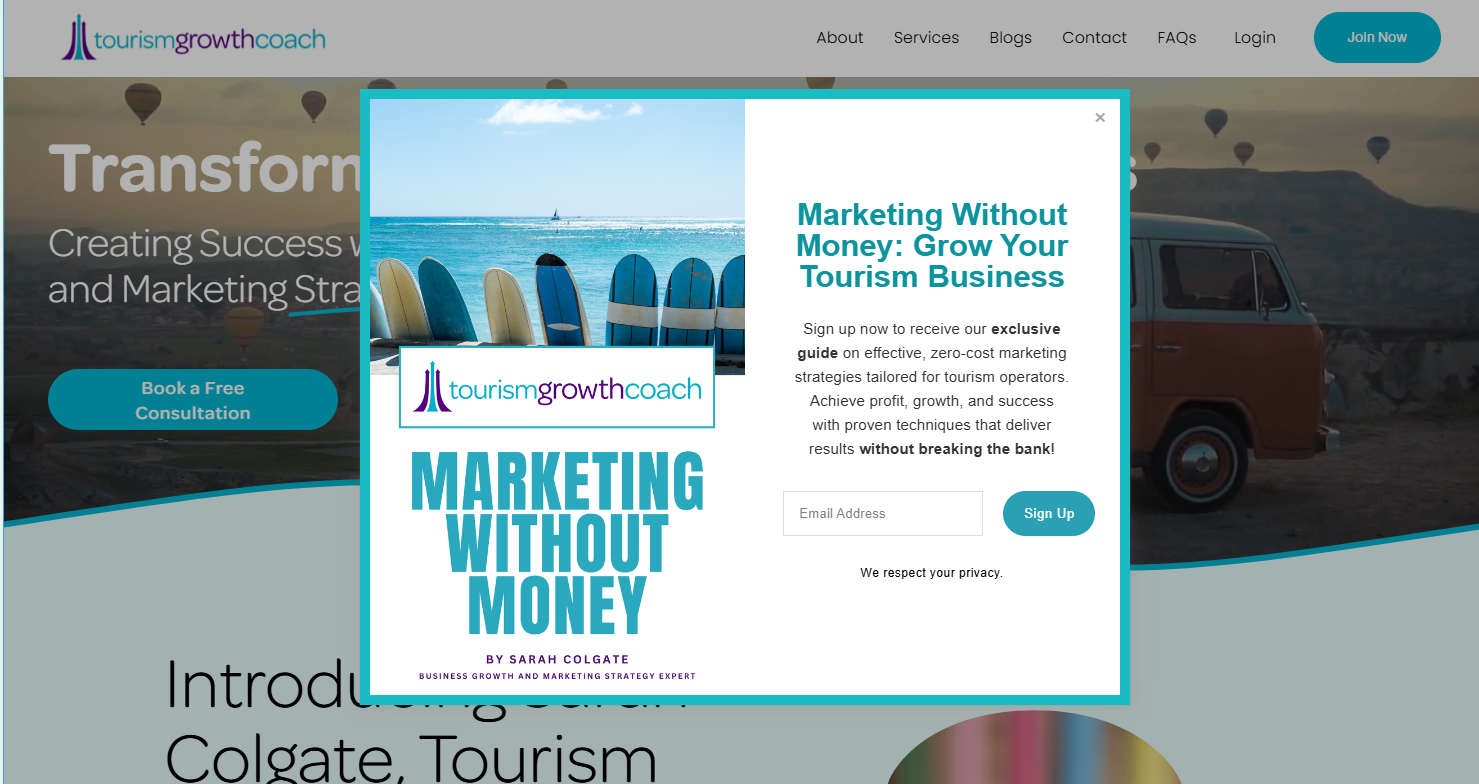Simple Digital Marketing Strategy for Australian Tourism Operators
Table of Contents
In such a competitive tourism industry, Tourism operators need a robust digital marketing strategy to attract and engage travellers.
We have put this guide together with examples to help you maximise your online presence, connect with potential customers, and drive bookings, tailored specifically for tourism businesses.
Step 1. Define Your Goals and Objectives
Set Clear Goals on what you want to achieve.
Define specific, measurable goals such as increasing website traffic by 20% in 6 months, generating 500 new leads per month, boosting bookings by 15%, or enhancing social media engagement by 30%.
Who is your Target Audience?
Identify your target audience, including international tourists, local travellers, adventure seekers, and families. Create detailed buyer personas to understand their needs and preferences.
Step 2. Optimise Your Website
User-Friendly Design
Ensure your website is easy to navigate, mobile-friendly, and visually appealing. Highlight key attractions and experiences. Ask friends and family who are not in tourism to test out your website and give you feedback.
Example:
Use a clean layout with clear navigation.
See Tourism Australia's website for inspiration.
Search Engine Optimisation
Implement on-page SEO strategies, including keyword research (e.g., "Great Barrier Reef tours", "Sydney Opera House tours"), meta tags, alt texts for images, and high-quality content to improve search engine rankings.
If you are not sure what people are searching for go to google and start searching. You will see what options come up as pre-filled text and also in the “People also asked” area.
Example:
A blog post titled "Top 10 Adventures in the Australian Outback" optimised for keywords like "Australian Outback tours."
Fast Loading Speed
Optimise your website’s loading speed to enhance user experience and reduce bounce rates.
Try pingdom or Google PageSpeed Insights to see how your site performs.
Websites with slow load times will not retain visitors for long. Ensure your images load quickly as do pages.
Clear Call-to-Actions (CTAs)
Use prominent CTAs to guide visitors towards booking tours, subscribing to newsletters, or contacting your business.
Example:
"Book Your Adventure Now" buttons prominently displayed on each tour page.
Step 3. Content Marketing
Blogging
Create a blog with valuable content such as travel guides, destination highlights, travel tips, and customer stories. Focus on Australian destinations, your local region and experiences.
You can also include information about restaurants and local cafes as well as events and festivals.
Example:
"A Week in Tasmania: Must-See Destinations and Hidden Gems."
Video Content: Produce engaging videos showcasing your tours, customer testimonials, and behind-the-scenes footage.
Example:
A YouTube video series titled "Discovering Australia with Sarah Colgate" featuring different Australian destinations.
Infographics
Design visually appealing infographics that provide quick and useful information about Australian travel destinations, your local region or city along with tips.
Example:
An infographic on "The Best Time to Visit Australia’s Top Attractions."
Gold Coast’s busiest Theme Park Days.
Step 4. Social Media Marketing
Platform Selection
Focus on platforms where your target audience is most active, such as Facebook, Instagram,
Twitter, Tik Tok and Pinterest. Hang out where your target audience do.
Example:
Use Instagram to post stunning images of local landscapes your guests can discover and Facebook to share travel stories and engage with followers.
Consistent Posting
Maintain a consistent posting schedule with a mix of promotional, educational, and entertaining content. You will notice less people are engaging but that doesn't mean they are not seeing your content. Don't be discouraged by a few likes and no shares.
Example:
Post daily photos on Instagram and weekly travel tips on Facebook.
Engage with Followers
Respond to comments, messages, and reviews promptly. Engage with your audience through polls, contests, and user-generated content.
Example:
Run a photo contest on Instagram with the hashtag #ExploreYourCity.Whatever your city is and encourage other businesses to get involved.
Influencer Collaborations
Partner with travel influencers, especially those popular among your target market, to reach a broader audience and gain credibility. Often your local tourism organisation can connect you with influencers or just start searching for them.
Example:
Collaborate with a travel influencer from your target market to feature your tours in their travel vlogs. Often travel influencers can help you build a profile in emerging markets. For example India.
Step 5. Email Marketing
Build an Email List
Use sign-up forms on your website and social media to collect email addresses from interested visitors. Maybe even provide them with an incentive to do so, a small discount or free gift.
Example:
Offer a free "Ultimate Guide to Australian Adventures" e-book in exchange for email sign-ups.
Segment Your List
Segment your email list based on customer preferences, booking history, and demographics to send targeted campaigns. Take the time to ask a few questions of your customers to gain some insights and enable you to create some identifying characteristics.
Example:
Create segments for families, adventure travellers, and luxury tourists.
Regular Newsletters
Send regular newsletters with updates, special offers, travel tips, helpful information for future guests and featured blog posts.
Example:
A monthly newsletter featuring seasonal highlights and upcoming events.
Personalised Campaigns
Use personalised emails to engage past customers and encourage repeat bookings. Consider those customers who booked with you last Christmas, provide them with a reason to book with you this Christmas.
Example:
Send personalised recommendations based on past bookings.
Step 6. Pay-Per-Click (PPC) Advertising
Google Ads
Google Ads can be a little daunting but the best way to learn is to give them a go, see what works and what doesn't. Run targeted ads on Google to appear in search results for relevant travel-related keywords.
Example:
A Google search ad targeting "Great Barrier Reef snorkelling tours.”
Social Media Ads
Utilise Facebook and Instagram ads to target specific demographics and interests. These are accessed via Meta Business. Again, it’s all about trial and error.
Example:
An Instagram ad campaign showcasing summer adventures in Australia.
Retargeting Campaigns
Implement retargeting ads to reach visitors who have interacted with your website or social media but haven’t booked yet. This can be done on google and facebook.
Example:
A retargeting ad offering a discount to users who visited the booking page but didn’t complete the booking.
Step 7. Local SEO and Google My Business
Optimise your Google My Business Profile
Ensure your Google My Business profile is complete and accurate with your business name, address, phone number, website, and high-quality photos. Add FAQs and use keywords in your description to help more people find you.
Example:
Include photos of your tours, customer reviews, and a virtual tour of your office or facilities.
Encourage Google Reviews
Ask satisfied customers to leave positive reviews on your GMB profile to build credibility and improve local search rankings. Ensure you respond to your reviews whether they are good or bad.
Example:
Send a follow-up email after tours asking for a review and providing a direct link to your GMB profile.
Local Listings
Ensure your business is listed in local online directories and travel-related platforms. There are thousands of travel related websites and platforms available to list your business with. Start googling your competitors or bigger tourism businesses and see where they are listed.
Example:
List your business on TripAdvisor and local Australian tourism websites.
Step 8. Online Travel Agencies (OTAs)
Leverage OTAs
List your tours on popular OTAs like TripAdvisor, Expedia, Booking.com and Viator to reach a wider audience. There are so many OTAs these days. Sure not all of them will give you business however if your product is listed across all of them it will help build your profile.
Example:
Create detailed and attractive listings for each tour on these platforms.
Optimise OTA Listings
Ensure your listings are detailed with compelling descriptions, high-quality images, and competitive pricing.Use keywords and phrases that are searched regularly in your listings.
Example:
Highlight unique aspects of your tours and include professional photos.
Step 9. Leverage Australian/State / Regional / City Based Campaigns
Seasonal Campaigns
Create campaigns that highlight seasonal activities and attractions, such as summer beach trips, winter skiing adventures, or spring wildlife tours. Contact your local Tourism Organisation to see what campaigns are coming up and how you can participate.
Example:
"Experience the Best of Australia this Summer – Book Now!"
Public Holidays and Events
Promote tours related to Australian public holidays and events like Australia Day, Anzac Day, and local festivals.
Example:
Special packages for the Melbourne Cup or Sydney's Vivid Festival.
Local Partnerships
Collaborate with local businesses, hotels, and restaurants to offer package deals and cross-promotions.
Example:
Partner with a local hotel for a "Stay and Tour" package deal.
Conclusion
For tourism operators, implementing a comprehensive digital marketing strategy is key to thriving in today’s competitive landscape.
By optimising your online presence, creating valuable content, engaging with your audience, and leveraging advertising and SEO, you can attract more travellers, increase bookings, and grow your business. Incorporating tourism marketing solutions and social media tourism marketing into your strategy can further enhance your reach and effectiveness. Stay adaptable, monitor your performance, and continuously refine your approach to achieve sustained success in the tourism industry.
Do you need help in your tourism business?
Elevate Your Brand and Drive More Direct Sales: From social media marketing to website updates, our services are crafted to meet your business needs. Elevate your brand - contact us for a consultation!
📞 Call us at 0491 729 043
Let's turn your tourism business dreams into reality!












